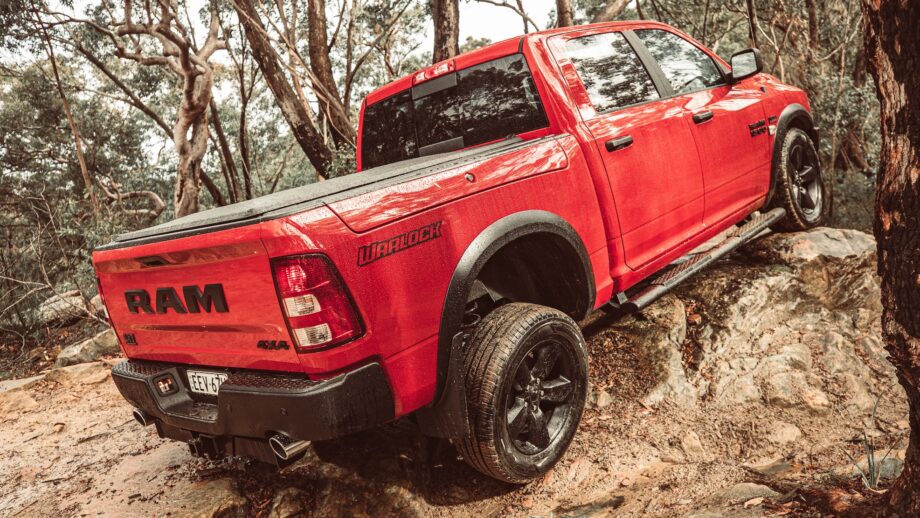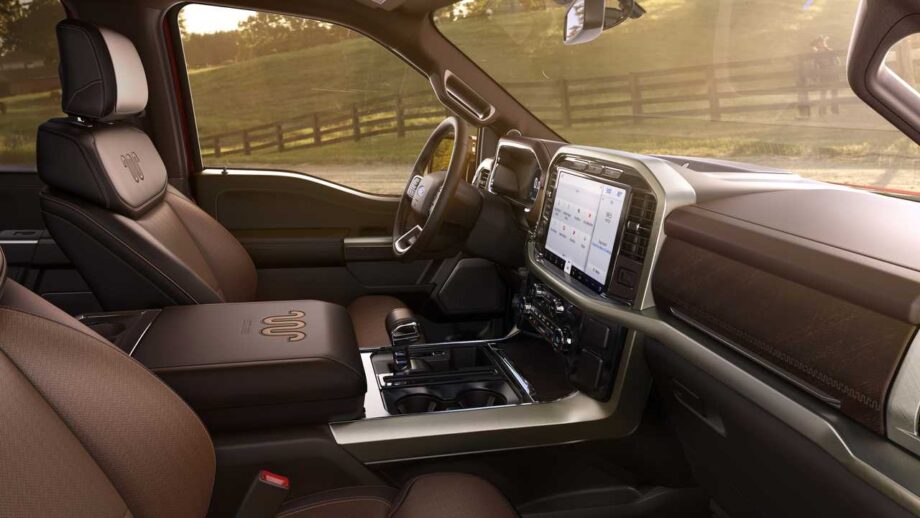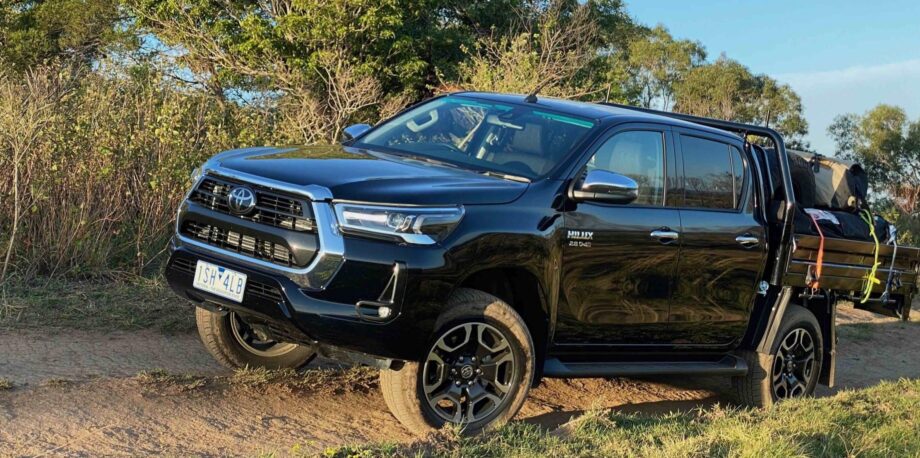We Australians love our utes. An essential tool in the working man’s arsenal and a quintessential piece of Australiana, the story goes that Ford Australia was motivated to produce a
“coupé utility” after receiving a letter from a farmer’s wife asking for “a vehicle to go to church in on a Sunday and which can carry our pigs to market on Mondays” in 1932. It’s been a vehicular love story ever since.
Traditionally, utes were relatively small vehicles based on a passenger car chassis, like the Holden Commodore or the Ford Falcon, with the cargo tray integrated with the passenger body (as opposed to a pickup truck, where the cargo tray is separated from the passenger body). A few foreign brands also offered utes, such as the Subaru Brumby or the Proton Jumbuck, but it was mostly an Aussie affair.
The end of local auto manufacturing and changing consumer tastes have seen these sorts of vehicles disappear from showroom floors – these days, pickups like the Toyota Hilux and Ford Ranger (currently Australia’s top two best selling vehicles) get called ‘utes’ but they’re not really utes in the eyes of many.
The definition of the ute is changing even further in today’s ultra-competitive automotive landscape with the rising popularity of American full-sized pickup trucks like the Chevrolet Silverado, Ford F-Series, GMC Sierra and Dodge RAM. Imported by third-party firms and converted to right-hand drive locally, these trucks dwarf virtually any vehicle on the road and guzzle more fuel than a Bugatti Chiron putting down quarter miles.
Beyond running costs, they’re also incredibly expensive to buy in the first place, with most featuring sticker prices well in excess of $100,000. That’s luxury car territory – or, at the very least, Toyota Land Cruiser territory – for vehicles that seem, on paper, to be crude, impractical and boorish. So why are they becoming so popular?

The Dodge RAM 1500 Classic Warlock taking on the Aussie bush. Image: MoparInsiders
RELATED: Toyota Land Cruiser ‘Blood Pact’ Shows How Crazy Australia’s Car Market Has Become
DMARGE spoke exclusively with Trent Nikolic, Managing Editor of Drive, who relates that while he doesn’t think American trucks will ever make their way here in enough volume for them to enjoy the “default family vehicle” status they enjoy in the US, he suggests that their growing popularity is because “nothing here really offers the same features.”
“There isn’t a vehicle you can buy that has a big petrol V8, is RWD, with a tray and the room that the trucks have inside. [The] Nissan Patrol is as close as you can get from the regular brigade. The other thing the US trucks do better than anything, is tow.”
DMARGE also spoke with Mike Sinclair, Editor-in-Chief of Carsales, who concurs that their towing capacity is a major factor.
“If you’ve owned two or three high-spec Hiluxes or Rangers and you’re ready for a change, where do you go… When you work out the current crop of utes rated to tow 3500kg actually struggle with the task, where do you go… When the taxman pays for most of the running costs of your ute and you can buy a full-sized pick-up for $90K (remember, [Ford Ranger] Raptors are $80-ish), why not.”
“We think the demand for these vehicles will continue to increase – especially so as lower-cost versions arrive.”
“Right now a ban on overseas holidays sees Aussie reconnecting with road trip style holidays (taking a boat, a caravan etc.) and this is supercharging the demand.”

The cabin of a 2021 Ford F-150 King Ranch. The F-Series has been the best-selling truck (and vehicle) in the United States for decades. Image: Motor1
The other reason these vehicles are becoming so popular is that despite their agricultural origins, they’re actually rather luxurious, especially in higher specc’ed vehicles such as F-Series’ King Ranch or Limited trim levels or the Sierra Denali.
Acres of leather; heated and ventilated seats; sunroofs and ambient lighting; adaptive cruise control and other advanced driver’s aids and of course, more cupholders than you can shake a stick at… They might have a luxury vehicle’s price tag but they’ve also got many of the features you’d expect from a luxury vehicle, whilst being much more practical and without carrying the sometimes negative cultural cache you’d get from driving a luxury car.
It’s that last point that really appeals to Aussies. They’re immune to the ‘tall poppy syndrome’ that’s pervasive in our society. It’s why they’re so popular in their home country, too. Sure, driving an American truck in Australia can make you look like a bogan, but tall poppy syndrome dictates that it’s better to look like a bogan than a wanker. Pardon my French.
RELATED: Australia’s ‘Bogan Car Bubble’ Won’t Last Forever, Expert Warns
For that matter, it’s also why smaller pickups like the Hilux and Ranger are currently so popular Down Under, and partly why they weaselled out car-based utes. Driving a pickup is cooler than driving an SUV or a minivan, or so the conventional wisdom goes. When you also consider they’re great off-road and tough as nails, it all really adds up.

A 2021 GMC Sierra 1500HD. The GMC Sierra and Chevrolet Silverado are essentially the same vehicle. Image: Performax International
Sure, pickups – and their bigger American cousins – might be more practical than the old Aussie ute or many other cars on the road, but there’s something they can’t do as well: actually drive.
“When [the] Commodore and Falcon died so did car-based utes. With V8 or turbo 6 high-performance powertrains, they were a unique Aussie phenomenon and won’t ever be seen again,” Sinclair explains.
RELATED: Australia’s Most Beloved Car Engine Is Now An Endangered Species
“I’m not for a moment suggesting they’d be selling at the rates of dual-cabs, however. This is a different buyer attracted by the (largely imagined) extra flexibility of a dual-cab as a family vehicle. The addition of more comfort, more tech and a nod to safety (airbags, AEB, etc.) has all attracted family buyers.”
“Of course, the reality is these vehicles aren’t great to drive, aren’t all that safe (compared to a modern SUV) and are actually pretty expensive to buy and own.”
Nikolic agrees: “dual-cabs are still more truck-like than car-like to drive and inside the cabin.” The same is true for this new suite of big American trucks: they might be great off-road and haul like nobody’s business, but when it comes to driving manners, they can’t escape the fact that they are trucks, not cars.

A 2021 Toyota Hilux, Australia’s #1 best-selling vehicle. There’s not much a Hilux can’t do, but it seems their throne is increasingly under fire from ‘Yank tanks’. Image: Pat Callinan’s 4×4 Adventures
“Will I ever be able to buy a car-based utility again? The answer is probably no, but there’s a hole in the market for sure,” Nikolic relates.
“In short though, not enough Australians were buying Australian-built cars to sustain the industry. So it’s simply a fact that the manufacturers stopped building the utes, rather than buyers didn’t want them.”
RELATED: Land Rover’s Newest Defender Labelled ‘Pointless’ By World’s Top Motoring Journalist
One thing that is good about the rise of these big American trucks is that they’ve seen a revival of local manufacturing – in a sense. The local importers that are converting them to RHD and engineering them for Australian regulations are sizeable operations that are generating local jobs and keeping money in-country. There’s a lot to be said about that, even if it’s not the same as building a car from scratch for your fellow countrymen.
Time will tell if these American trucks will be able to hold their own in Australia’s notoriously competitive automotive market. As fuel prices continue to rise and Australia’s electric vehicle charging network continues to grow, the next big threat on the horizon will be electric utes, like the Rivian R1T, Tesla Cybertruck and the Ford F-150 Lightning. But that’s a whole other kettle of fish…
